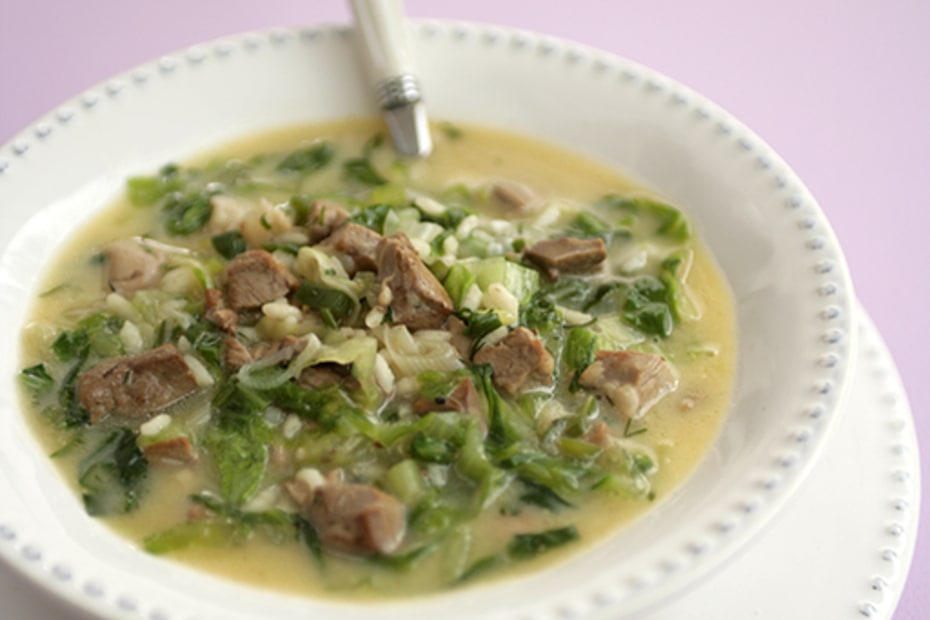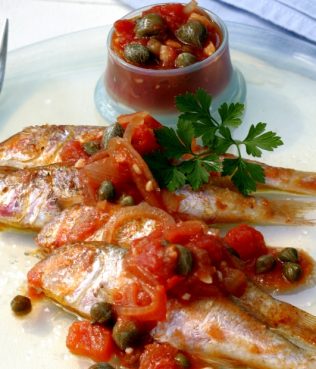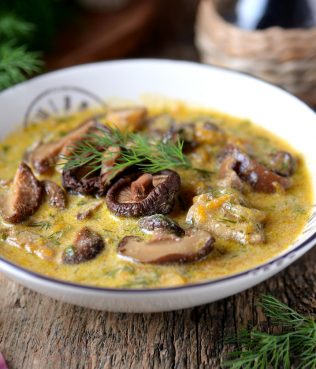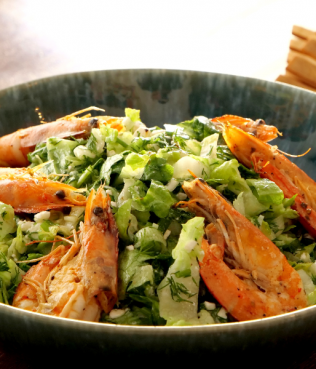
Mageiritsa–the Greek Easter Soup
Most Greeks the world over enjoy a hot bowl of mageiritsa soup after the midnight liturgy on the Saturday night before Easter. The soup, made with lamb or goat organ meats, is a perfect example of the home economy that characterizes the Greek cuisine.
Nothing, in short, is wasted. The soup marks the end of the Lenten fast. It is also meant to play a more practical role on the table, by “calming” the stomach and preparing people who’ve been abstaining from animal products for 40 days to ease into the carnivorous feast that Greek Easter inevitably ends up being. Tradition says that the soup must be made on Holy Saturday, arguably for reasons that have more to do with food hygiene than tradition–organ meats are highly perishable, so the faster one eats them after cooking, the better. The classic mageiritsa recipe contains all kinds of offal–intestines, liver, kidneys, lungs, etc.–as well as rice, shredded lettuce, lots of dill, scallions and egg-lemon sauce, or as it’s known in Greek, avgolemono. There are also many regional variations, which mirror the country’s history and geography. In some places, the soup is made only with the lamb’s head or trotters. In some areas, local cooks take the trouble to braid the intestines, making them more attractive! In Thessaly, which is in the central part of Greece, mageiritsa is flavored with mint and made more like a stew than a soup. In the Peloponnese, some versions call for adding tomato but also the egg-lemon liaison. In Corfu, the local soup is also more like a stew and is called tsilikourtha. A few practicalities… What exactly do Greeks mean when they refer to innards? Essentially the internal organs, particularly those of abdominal and thoracic cavity. These include heart, lungs, liver (without gall bladder), spleen and kidneys. After the mad cow scares of the last decade, the sale of such meats has been greatly limited both in the U.S. and in the E.U. In a nod to Greece’s longstanding traditions, offal has not been banned, but it may only be culled from animals that are under one year of age. Washing those intestines! This is not fun. Intestines, as most of you can guess, have a distinctive smell. They have to be washed very well. The way to do this is to turn them inside out, rinsed over and over and rubbed wth salt and/or lemon to whiten them and neutralize their distinctive odor.
Ingredients
- Viscera/ organ meats lungs, hear, liver, intestines, etc. from one baby lamb
- Lamb’s head
- Salt
- 3 quarts/ liters water
- ½ cup extra viegin Greek olive oil
- 3 bunches green onions washed, peeled and chopped
- 1 lb. / 500 gr. lean lamb chopped
- 4-5 Romaine lettuce heads washed and shredded
- 1 ½ cups chopped parsley
- 1 ½ cups chopped dill
- 1 cup short-grain rice
- 5 eggs beaten
- Juice of 3 lemons
- Salt and pepper
Instructions
-
Rinse the organ meats very well in plenty of cold water to remove all traces of blood.
-
To wash the intestines, rinse very well and invert, using a knitting needle as your guide. Continue rinsing and then rub with either lemon or salt. Chop the intestines and aside in refrigerator until ready to use
-
Rinse the head very well. Place in a pot with plenty of salted water and bring to a boil. Reduce heat to a simmer and cok slowly for about 2-3 hours, skimming the foam off the top and replenishing the water as needed. Remove the head, reserve the broth and strain, if desired.
-
Chop the organ meats. Heat the olive oil in a large, wide pot and saute the organ meats. Add the scallions and saute for a few minutes, until translucent.
-
Place the strained broth back into a large soup pot. Add the sauteed organ meats and scallions to the broth.Bring to a boil. Add the shredded lettuce, herbs, salt and pepper. Simmer the soup for about one hour, covered. Replenish the water as needed. There should be about 3 quarts total. Stir in the rice. Simmer until the rice is soft.
-
In a separate metal bowl, whisk together the eggs until very frothy. Slowly whisk in the lemon juice. Then, slowly 2 ladels full of the hot soup broth, careful not to get solids in the ladle. The hot broth should be added drop by drop. Return the tempered egg-lemon micture to the pot, with the heat turned off, and tilt the pot back and forth so that the avgolemono is evenly distributed. Do NOT cover the pot. Serve immediately.
-
“Genteel” Mageiritsa (without organ meats)
-
Instead of organ meats, use a lamb shank. Season it with salt and pepper, sautee it in olive oil in a large soup pot, add the scallions, then add water or meat stock. Season to taste. Cook all together for 2 – 3 hours or until the meat falls off the shank. Remove the shank, let it cool slightly, and remove and shred the meat. Place it back into the broth, together with the shredded lettuce and herbs. Cook together for 30 minutes, Add the rice. And follow the directions above for making the egg-lemon liaison.
Love soup? Check out my online class “Comfort in a Soup Bowl!”









